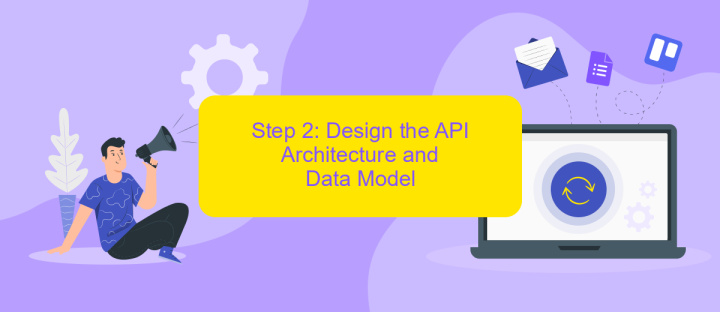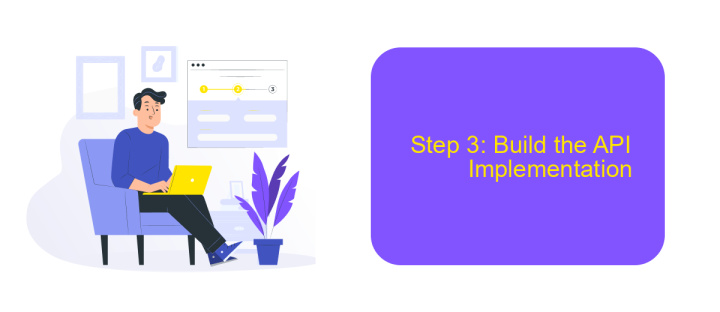What is The First Step to Create a Modern API in MuleSoft
Creating a modern API in MuleSoft begins with a clear understanding of your business requirements and objectives. Before diving into the technical aspects, it's crucial to define the purpose and scope of your API. This foundational step ensures that your API is designed to meet specific needs, providing a solid framework for subsequent development and integration tasks.
Introduction
Creating a modern API in MuleSoft involves several critical steps to ensure efficiency, security, and scalability. The first step is crucial as it lays the foundation for the entire API development process. Understanding the initial phase can significantly streamline subsequent stages and help avoid common pitfalls.
- Define the API requirements and objectives.
- Choose the right tools and platforms, such as MuleSoft's Anypoint Platform.
- Design the API using RAML (RESTful API Modeling Language).
- Set up integration services like ApiX-Drive for seamless connectivity.
- Implement security measures to protect data and ensure compliance.
By focusing on these initial steps, developers can create robust and efficient APIs that meet business needs and integrate smoothly with other systems. Leveraging tools like ApiX-Drive can simplify the integration process, allowing for easy connection between various applications and services. This approach not only enhances productivity but also ensures that the API is scalable and secure from the outset.
Define the API Scope and Functionality

The first step in creating a modern API in MuleSoft is to define the API scope and functionality. This involves identifying the specific business requirements and objectives that the API aims to achieve. By understanding the needs of the stakeholders, you can outline the key features and capabilities that the API should offer. This step is crucial as it sets the foundation for the entire API development process, ensuring that the final product aligns with the intended use cases and delivers value to its users.
Additionally, consider the integration needs and how the API will interact with other systems. Tools like ApiX-Drive can be invaluable in this phase, as they facilitate seamless integration with various platforms and services. By leveraging such tools, you can streamline the integration process, ensuring that the API can effectively communicate with external systems. This proactive approach not only enhances the API's functionality but also ensures that it can adapt to future integration requirements, providing a robust and scalable solution.
Design the API Architecture and Data Model

Once you have established the initial step of creating a modern API in MuleSoft, the next crucial phase involves designing the API architecture and data model. This step is essential for ensuring that your API is robust, scalable, and meets the requirements of your business and users.
- Define the API endpoints: Identify and outline the various endpoints that your API will expose. This includes determining the HTTP methods (GET, POST, PUT, DELETE) that will be used for each endpoint.
- Design the data model: Create a comprehensive data model that accurately represents the data structures your API will handle. This includes defining entities, relationships, and data types.
- Utilize integration services: Leverage integration platforms like ApiX-Drive to streamline the process of connecting your API with other services and applications. ApiX-Drive offers a user-friendly interface and powerful tools for seamless integration.
- Document the API: Ensure that your API is well-documented, including detailed descriptions of each endpoint, request/response formats, and authentication mechanisms.
By carefully designing the API architecture and data model, you lay a solid foundation for a successful API. Utilizing services like ApiX-Drive can further enhance the integration capabilities, making it easier to connect with various systems and applications efficiently.
Build the API Implementation

Once the API design is finalized and the RAML specification is created, the next step is to build the API implementation. This involves transforming the API blueprint into a functional and efficient service. MuleSoft's Anypoint Studio is a powerful tool that can be utilized for this purpose. It provides a comprehensive environment for developing, debugging, and deploying APIs.
Begin by setting up a new Mule project in Anypoint Studio and importing the RAML file. This will automatically generate the necessary flows and endpoints based on the API specification. Next, configure the API to handle various HTTP methods and integrate it with backend systems or databases. This is where ApiX-Drive can be particularly useful, as it simplifies the process of connecting to various third-party services and automating data transfers.
- Set up the Mule project and import the RAML file.
- Configure HTTP listeners and routers.
- Use ApiX-Drive to integrate with third-party services.
- Implement data transformation and validation logic.
- Test the API thoroughly to ensure it meets the requirements.
Utilizing ApiX-Drive for integrations can significantly reduce development time and complexity. It offers a user-friendly interface to connect different systems without extensive coding. Once the API implementation is complete, deploy it to a suitable environment and monitor its performance to ensure it operates smoothly.
Conclusion
Creating a modern API in MuleSoft begins with a comprehensive understanding of your integration needs and the tools available to meet those needs. By leveraging MuleSoft's Anypoint Platform, you can design, build, and manage APIs effectively, ensuring they align with your business objectives. The initial step involves defining the API's purpose and scope, followed by designing the API using RAML or OAS, which provides a blueprint for development and integration.
To streamline the integration process, services like ApiX-Drive can be invaluable. ApiX-Drive offers a user-friendly interface and robust features that simplify the connection of various applications and services, reducing the complexity of manual integrations. By utilizing such tools, you can expedite the deployment of your API, ensuring seamless communication between different systems. Ultimately, the success of your API initiative hinges on careful planning, the right tools, and continuous monitoring to adapt to evolving business needs.
- Automate the work of an online store or landing
- Empower through integration
- Don't spend money on programmers and integrators
- Save time by automating routine tasks
FAQ
What is the first step to create a modern API in MuleSoft?
Do I need to write code to design an API in MuleSoft?
How can I test my API after designing it in MuleSoft?
Can I automate the integration of my MuleSoft API with other services?
What is the role of Anypoint Exchange in the API creation process?
Apix-Drive is a simple and efficient system connector that will help you automate routine tasks and optimize business processes. You can save time and money, direct these resources to more important purposes. Test ApiX-Drive and make sure that this tool will relieve your employees and after 5 minutes of settings your business will start working faster.


